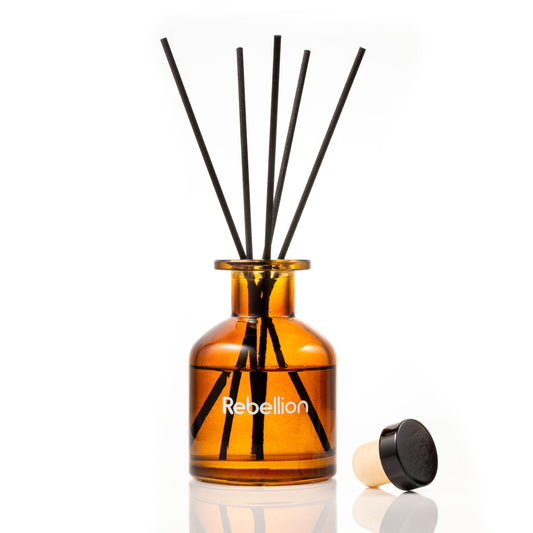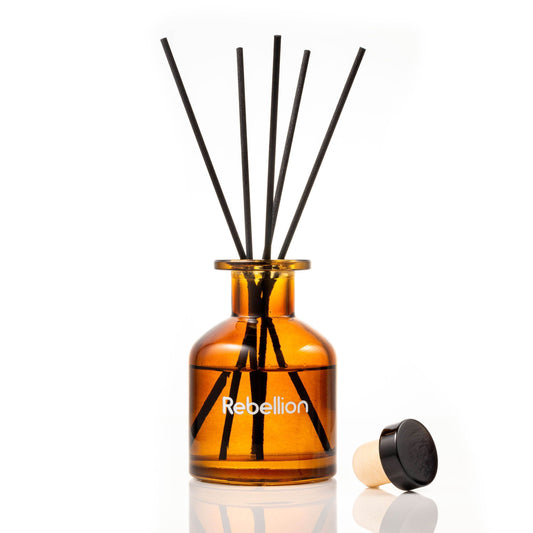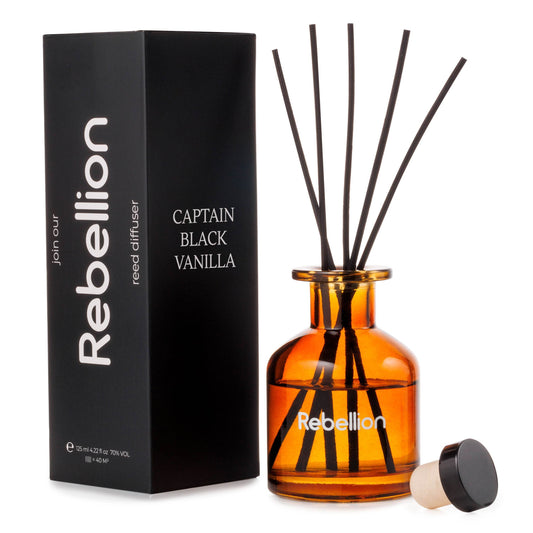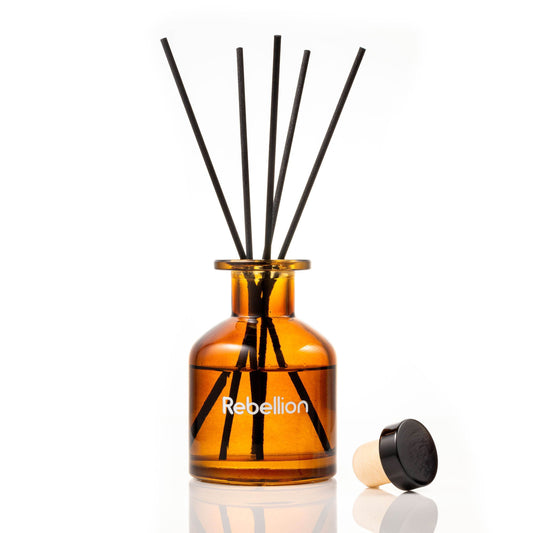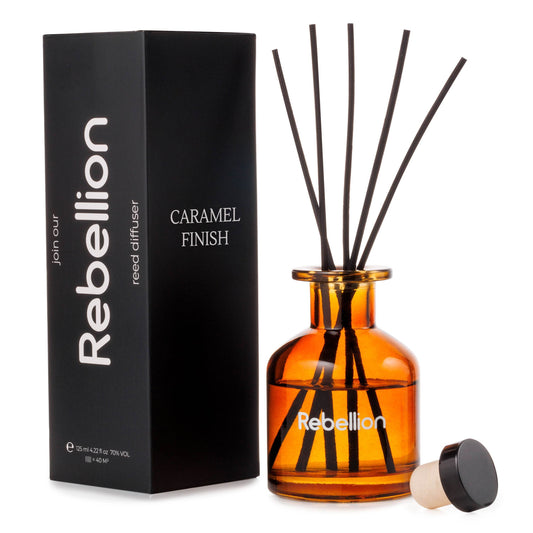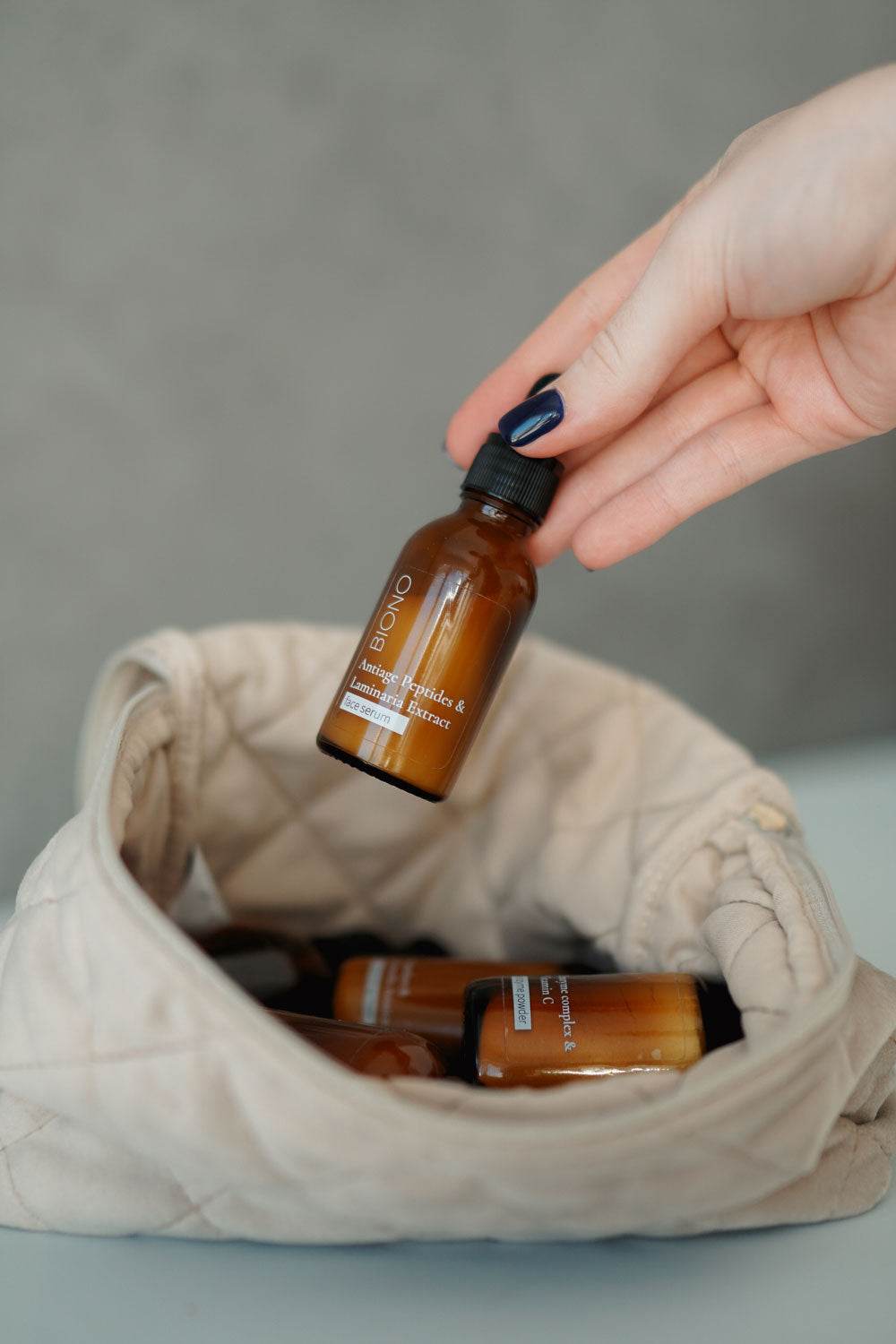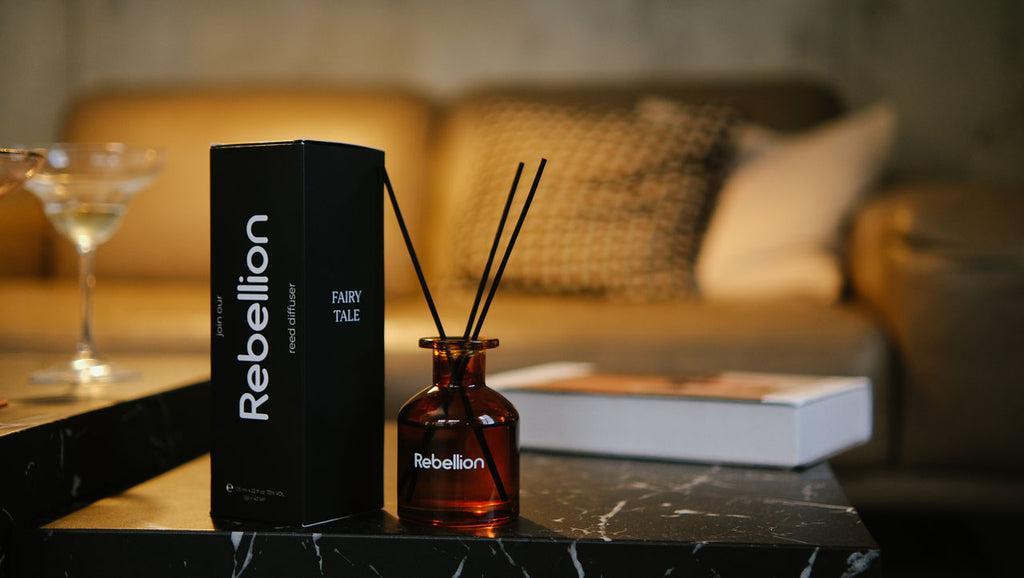
Reed Diffusers for Your Living Room: How to Choose the Perfect Scent in 5 Steps
Share
Fragrance in a home is the invisible calling card of any interior, creating an atmosphere that stays with guests for a long time. Aroma diffusers for living rooms are an elegant solution that combines functionality with aesthetics, and among them, reed diffusers are gaining popularity thanks to their simplicity and effectiveness.
What are reed diffusers and why you should choose them
Reed diffusers are aromatizers consisting of an elegant container filled with fragrance oil and a set of rattan or reed sticks that act as natural aroma conductors. The sticks absorb the oil and then release the fragrance into the environment continuously and evenly, without the need for a flame or electricity. This solution has been appreciated by interior designers and minimalists for years.
When choosing reed diffusers for your living room, we prioritize safety and convenience. Unlike scented candles, they require no supervision and last from several weeks to even several months, depending on the size of the container and the number of reeds used. Furthermore, modern diffuser bottles often become a standalone decorative element, enhancing the character of your living room and demonstrating attention to detail.
Reed diffusers for living rooms are an ideal choice for allergy sufferers and those sensitive to smoke or strong odors. The gentle, gradual release of the aroma keeps the space fresh but not overwhelming. They're also a great option for homes with children or pets, as the absence of an open flame eliminates the risk of uncontrolled situations.

How Reed Diffusers Work – The Science Behind the Simplicity
The operating mechanism of reed diffusers is based on capillarity, the ability of liquids to move through narrow channels without the aid of external forces. Rattan or reed sticks have a naturally porous structure with microscopic channels that facilitate the transport of fragrance oil from the base to the top. When the liquid reaches the top of the stick, evaporation begins, and the aroma spreads through the room in line with the airflow.
The intensity of the fragrance can be adjusted by the number of reeds used – more reeds means faster consumption of the liquid, but also a stronger aroma. Manufacturers typically recommend starting with 5-6 reeds in a medium-sized diffuser, then adjusting the number to your preference. It's worth noting that the reeds should be rotated every 7-10 days to refresh the fragrance and prevent them from drying out.
The quality of the reeds is crucial to the effectiveness of the diffuser. The best ones are made of natural rattan, which is characterized by optimal porosity and durability. Cheaper alternatives, such as bamboo or synthetic reeds, may be less effective and require more frequent replacement. Therefore, when purchasing aroma diffusers for your living room, it's worth paying attention not only to the oil itself but also to the quality of the reeds included.
Choosing the right fragrance for your living room
The living room is the most representative space in the home, where we spend time with family and entertain guests, so choosing a fragrance should be thoughtful and versatile. The best scents for this room are those that create an atmosphere of warmth and comfort without being too intense or controversial. Lemon compositions with notes of bergamot or grapefruit work well in bright, modern interiors, adding energy and freshness.
For lovers of classics, floral notes like lavender, rose, or peony are the perfect choice, bringing elegance and delicacy. These aromas blend perfectly with Provençal, Scandinavian, or French décor, creating a harmonious whole. Reed diffusers with floral compositions often also incorporate woody or green notes, which add depth and longevity to the fragrance.
Oriental and woody fragrances are also becoming increasingly popular, lending a luxurious touch to the living room. Notes of amber, patchouli, cedar, and sandalwood create an atmosphere of warmth and coziness, especially in the fall and winter. When choosing fragrance diffusers for your living room, it's also worth considering the season – in summer, we opt for fresh, citrus aromas, and in winter, warm, spicy, and woody compositions.
How to Choose Reed Diffusers – Key Purchase Criteria
Capacity and size of the room
Choosing the right diffuser size for your living room is key to effective aromatization. For rooms measuring 15-20 m², a 100-150 ml diffuser is sufficient and will last for approximately 6-8 weeks. For larger living rooms (25-35 m²), 200-250 ml is recommended, which will ensure even fragrance distribution for 2-3 months. For spacious, open-plan spaces, consider two smaller diffusers in different parts of the room instead of one large one.
Quality of oils and ingredients
The composition of a diffuser is crucial to its durability and safety. The best reed diffusers contain natural or high-quality synthetic fragrance oils dissolved in a neutral carrier, such as perfume alcohol or propylene glycol. Avoid products with a long list of obscure chemical ingredients that may cause allergies or irritate the respiratory tract. IFRA (International Fragrance Association) certifications confirm compliance with safety standards in the production of fragrances.
Design and aesthetics
A diffuser bottle should not only smell beautiful but also look aesthetically pleasing in your living room. Minimalist glass containers complement modern interiors, while colorful bottles or those with decorative elements work well in more classic or eclectic spaces. It's worth paying attention to the container's stability – a wide base prevents accidental tipping, which is important in homes with children or pets. Elegant aroma diffusers for the living room can become a true decoration for a dresser, coffee table, or shelf.
Diffuser placement in the living room – where to place it for the best effect
The placement of a reed diffuser has a huge impact on the fragrance's dispersion in a room. Ideally, it's in an area with natural airflow, but not directly exposed to a draft – air movement will help spread the aroma, but too strong a current can cause the oil to evaporate too quickly. A great spot is near the entrance to a living room, where the fragrance will welcome guests, or on a coffee table, which serves as the focal point of the room.
Avoid placing diffusers near heat sources such as radiators, fireplaces, or televisions, as high temperatures accelerate evaporation and can alter the fragrance composition. It's also advisable not to place them in direct sunlight, which can degrade the oil and discolor it. Living room diffusers work best at a height of approximately 1-1.5 meters, where the fragrance can spread freely.
If you have a large living room, consider using two smaller diffusers instead of one large one. Place them in opposite corners of the room to ensure even distribution of the fragrance. This solution is especially effective in open spaces connecting the living room to the dining room or kitchen. You can also experiment with different, yet complementary scents in different areas—for example, a citrus scent for the lounge area and a woody scent for the dining area.
Care and maintenance of reed diffusers
Regularly maintaining your reed diffuser extends its lifespan and ensures optimal fragrance intensity. The most important step is to regularly turn the reeds – it's recommended to do this every 7-10 days, dipping the dry end into the oil. This simple action refreshes the aroma and prevents the microscopic channels in the reeds from clogging. It's a good idea to wear gloves or a tissue when turning them to avoid getting oil on your hands and leaving fingerprints on the bottle.
Once the diffuser runs out of liquid, don't throw away the reeds immediately – they can still function well for another 2-3 refills if they're not too dirty or dried out. The bottle can be reused by thoroughly washing it with warm, soapy water and letting it dry completely. If you want to change the scent, make sure the container is perfectly clean so the new fragrance doesn't mix with any remnants of the previous fragrance. Some manufacturers of living room aroma diffusers offer refills, which is a cost-effective and eco-friendly solution.
If you accidentally spill oil on furniture or the floor, wipe the spill off as soon as possible with a dry cloth and then wash the area with detergent. Fragrance oils may contain dyes or oil-based ingredients that leave permanent stains on wood or fabrics. Therefore, a safer option is to place the diffuser on a small tray, stand, or coaster that will protect the surface from potential damage. It also acts as an additional decorative element that can enhance the style of your interior.
The best fragrance notes for different living room styles

Scandinavian-style living rooms
- Fresh marine notes with the addition of cedar – reminiscent of coastal winds and Nordic nature
- Lavender with gray amber – a delicate, calming composition perfect for minimalist interiors
- Eucalyptus and mint – a refreshing duo that adds energy to bright spaces
- White tea with jasmine – a subtle, clean scent that highlights the simplicity of the décor
- Linen with sandalwood – a natural composition that harmonizes with wooden elements
Classic and elegant living rooms
Reed diffusers in classic interiors should exude luxury and sophistication. Oriental compositions with notes of amber, oudh, or patchouli are perfect, creating an atmosphere of exclusivity. Rose and champagne are an elegant pairing, perfect for living rooms in neutral tones, while fig and bergamot introduce a Mediterranean charm. For lovers of tradition, a diffuser with notes of leather, tobacco, and whiskey is a great choice, giving the living room a masculine, library-like character.
Modern and industrial showrooms
Strong, distinctive scents that emphasize the industrial character of the space will work well in stark, urban interiors. Aroma diffusers for a loft-style living room should include notes of cedar, vetiver, or black pepper, which add depth and intensity. Aromas with the addition of concrete, teakwood, or metal also work well – modern brands create fragrances inspired by urban architecture. For balance, you can add fresh lemon or herbal notes, which will soften the austere feel of the interior.
Economic Aspects of Using Reed Diffusers
The cost of purchasing a reed diffuser can vary significantly depending on the brand, capacity, and quality of the ingredients. Basic 100ml diffusers can be found for as little as 30-50 PLN, while luxury brands offer products priced at 200-400 PLN for a similar capacity. However, it's worth considering not only the purchase price but also the duration of action and fragrance intensity – a more expensive product may be more economical if it lasts longer and is more effective.
Aroma diffusers for living rooms are a long-term investment compared to other aromatherapy methods. An average 200ml diffuser lasts 8-12 weeks, which translates to a cost of around 3-5 PLN per week for mid-priced products. Compared to scented candles, which burn for 30-40 hours and cost a similar amount, reed diffusers offer continuous 24/7 operation without the need for relighting. This makes them a more cost-effective solution for those who value convenience.
The ability to refill the bottle yourself makes diffusers even more economical. Fragrance refills typically cost 20-30% less than a complete set, and a single bottle can last for several years with proper care. Additionally, some brands offer loyalty programs or promotional sets that allow for significant savings on regular purchases. Seasonal fragrances are also worth considering, as they can be changed with the seasons, keeping your home fresh and scented.
Safety and ecology of reed diffusers
Safety is one of the main advantages of reed diffusers. The absence of an open flame eliminates the risk of fire, making them a safe choice for any home. However, fragrance oils are flammable, so diffusers should be kept away from sources of ignition and out of reach of children. Most manufacturers use child-resistant bottles, but extra caution never hurts.
Ecological considerations are also gaining importance when choosing fragrance diffusers for living rooms. More and more brands are opting for biodegradable ingredients, recycled packaging, and ethically sourced natural oils. It's worth looking for products with eco-certifications, such as Ecocert or USDA Organic, which guarantee minimal environmental impact. Glass bottles are reusable, significantly reducing waste compared to disposable air fresheners.
People with allergies or respiratory sensitivities should choose diffusers with natural essential oils over synthetic fragrances. Hypoallergenic products, free of phthalates and parabens, are a safer option for the whole family. Before first use, it's worth testing your body's reaction by placing the diffuser in the room for a few hours and observing any symptoms. If the scent seems too intense, simply remove a few reeds to reduce the intensity and adjust to your needs.
Summary: Why reed diffusers are the best choice for your living room
Reed diffusers are an elegant, practical, and safe solution for anyone looking to create a unique atmosphere in their living room. They combine functionality with aesthetics, operating continuously for weeks without requiring supervision or electricity. Their versatility makes them suitable for any interior style—from minimalist Scandinavian to luxurious classic. The ability to regulate fragrance intensity, a wide selection of aromatic blends, and a long operating time make them an ideal choice for those who value comfort and quality.
When choosing aroma diffusers for the living room, we invest not only in a pleasant aroma but also in the home's ambiance, which influences our well-being and the mood of our guests. Thanks to their ease of use, safety of use, and eco-friendly options on the market, reed diffusers are becoming an increasingly popular choice among conscious consumers. They are not only a way to scent a space but also a decorative element that demonstrates attention to detail and the creation of a harmonious home.


